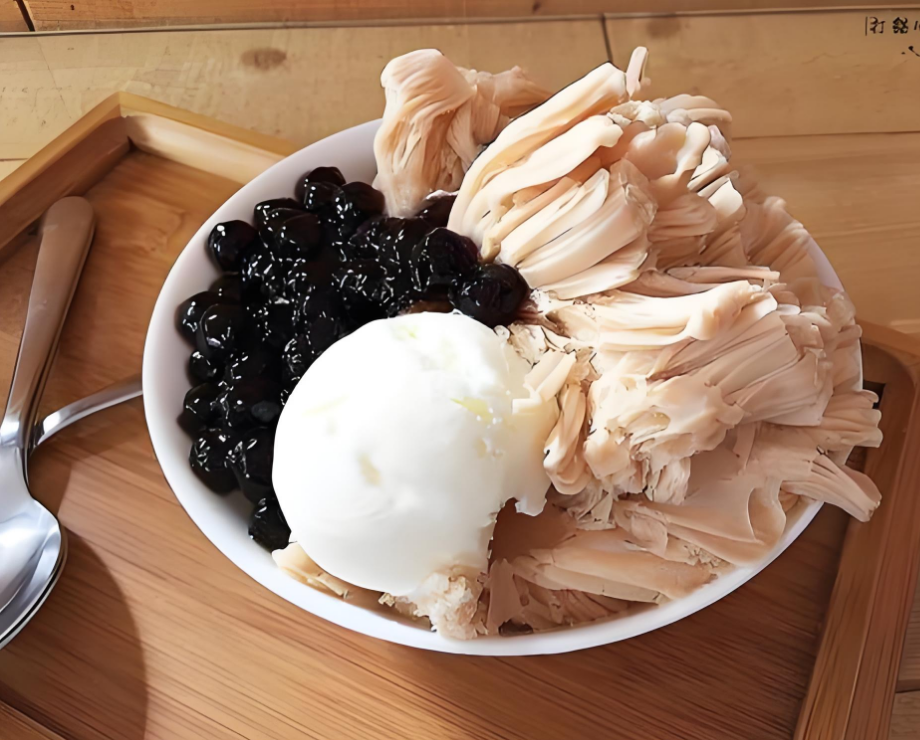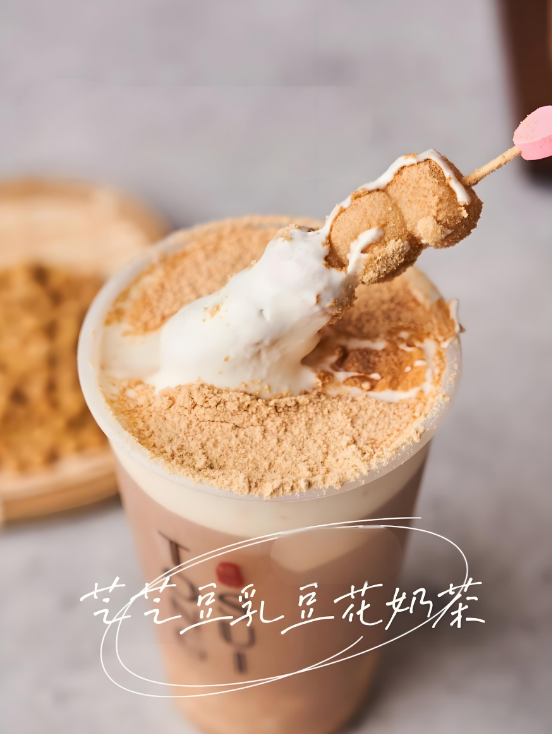You find ice cream tapioca in lots of recipes. It makes ice cream creamy and keeps its texture strong. Makers like tapioca because it gives smooth results. It holds water well and does not make ice cream icy. Studies say ice cream tapioca stops foam from breaking down. This helps your frozen treat stay creamy. Researchers learned tapioca makes dairy desserts more stable. It also improves their structure. If you want to see the change, try making ice cream tapioca at home. You will see how tapioca changes the texture and quality.
- Scientific studies show:
- Ice cream tapioca stops foam from breaking down. This helps keep creaminess.
- Tapioca makes a strong structure and holds water well in frozen desserts.
Key Takeaways
- Tapioca makes ice cream creamy and smooth. It does not change the taste.
- Tapioca syrup stops ice crystals from forming. This keeps ice cream soft and easy to scoop.
- Tapioca starch helps ice cream keep its shape. It holds water well and stops it from melting fast.
- Tapioca gives ice cream a special chewy feel. This makes eating ice cream more fun than other stabilizers.
- Tapioca starch does not have gluten. It is safe for many diets. This makes it a good choice for frozen desserts.
Ice cream tapioca benefits
Creamy texture boost
You want ice cream to taste rich and smooth. Tapioca helps make ice cream creamy every time. When you add tapioca, the ice cream base gets thicker. It feels fancy and smooth. Tapioca starch makes ice cream feel like it has more fat, even if you use less cream. You do not taste anything weird because tapioca does not have a strong flavor. You get the real taste of your ice cream with no strange aftertaste.
Tip: Using tapioca syrup makes ice cream even creamier. Tapioca syrup mixes in easily and helps you get a smooth finish.
Here are some reasons why people like tapioca for texture:
- It gives ice cream a creamy, smooth feel.
- It helps ice cream keep its shape and not melt fast.
- It keeps ice cream thick and rich, even after freezing.
If you want soft and creamy ice cream, tapioca syrup is a good choice. You can use tapioca syrup in homemade or store ice cream for the same texture every time.

Preventing ice crystals
Sometimes ice cream gets icy or rough after a few days in the freezer. Tapioca helps stop this from happening. When you use tapioca starch or syrup, you stop big ice crystals from forming. This keeps ice cream smooth and nice to eat. Tapioca grabs water, so ice crystals stay small. Your ice cream stays soft and easy to scoop.
| Evidence | Description |
| Ice Crystal Prevention | Tapioca starch grabs water and stops big ice crystals. |
| Texture Maintenance | Tapioca syrup keeps water stable for smooth texture over time. |
| Shelf Life Improvement | Tapioca syrup helps ice cream stay creamy and smooth longer. |
You can use tapioca syrup to keep ice cream fresh and smooth, even after storing it for a while. This means you get the same texture from the first scoop to the last.
Water-holding power
Tapioca syrup can pull in and hold water. You need this to keep ice cream soft and creamy. When you use tapioca syrup, water does not separate or make crystals. This keeps ice cream smooth and not grainy. Tapioca syrup also helps ice cream last longer because it stops crystals and keeps texture steady.
- Tapioca syrup pulls in moisture and holds it.
- You get creamy ice cream that lasts after freezing and thawing.
- Tapioca syrup stops ice cream from drying out or getting icy.
If you want ice cream that stays creamy and smooth, use tapioca syrup. You can trust tapioca syrup to help texture and keep it the same in every batch. Try tapioca syrup in your next recipe and see how it changes your ice cream.
Tapioca powder vs. other stabilizers
Tapioca powder vs. cornstarch
When you make ice cream, you pick between tapioca powder and cornstarch. Both help thicken ice cream, but they do it in different ways. Tapioca powder makes ice cream smooth and a little chewy. You notice this in desserts like pudding. Cornstarch gives sauces and gravies a smooth feel. It can make baked foods crisp, but it does not make ice cream chewy.
If you want ice cream that is soft and creamy, use tapioca powder. It gives a rich feel that lasts after freezing. Cornstarch works for other foods, but it does not give ice cream the same texture or strength.
Tip: Use tapioca powder to keep ice cream creamy and not icy.
Tapioca vs. gums
You see many stabilizers in ice cream recipes. Some common ones are gelatin, guar gum, locust bean gum, carrageenan, xanthan gum, and sodium carboxymethyl cellulose. Each stabilizer works in its own way. Here is a quick look at how they compare:
- Gelatin: Stops ice crystals from forming.
- Guar gum: Makes ice cream thick.
- Locust bean gum: Makes ice crystals smaller.
- Carrageenan: Keeps whey from separating.
- Xanthan gum: Makes ice cream creamy and stable.
- Tapioca powder: Thickens with heat and works well after freezing.
Tapioca powder needs heat to thicken ice cream. You use about 20 grams for every 1000 grams of mixture. If you use too little, ice cream can get icy. Xanthan gum works at lower temperatures and makes ice cream creamy. Other gums often need to be mixed together for the best results.
Flavor and texture differences
You want ice cream to taste good and feel smooth. Tapioca powder does not change the flavor, so you taste the real ice cream. It helps make ice cream chewy and creamy. Studies show ice cream with tapioca powder scores high for texture, especially with cultures like L. casei. Ice cream with 10% fat and tapioca powder has better texture than some store stabilizers.
| Stabilizer | Texture Effect | Flavor Impact |
| Tapioca powder | Chewy, creamy, smooth | Neutral |
| Cornstarch | Smooth, less chewy | Neutral |
| Xanthan gum | Creamy, stable | Slight tang |
| Gelatin | Dense, firm | Mild |
If you want ice cream that is creamy and smooth with no weird taste, tapioca powder is a good choice. You get ice cream that stays fresh and smooth.
How tapioca starch works in ice cream
Thickening and gelatinization
When you put tapioca in ice cream, it helps thicken the mix. Heat changes how tapioca starch works. Water breaks the bonds inside the starch grains. The grains get bigger and make a gel network. This network gives ice cream a smooth and steady texture. Tapioca makes the mix stretchy and less runny. The gel holds everything together. It helps ice cream stay creamy.
- Pre-gelatinized starch changes its structure when heated and dried fast.
- Water breaks hydrogen bonds, so the starch swells and forms a gel.
- The gel network is stretchy and strong, which helps keep ice cream thick.
Stability during freeze-thaw
You want ice cream to stay smooth after freezing and thawing. Tapioca helps by keeping the gel soft. Some starches, like mung bean starch, make firmer gels. Tapioca gives a softer texture. The table below shows how different starches work:
| Starch Type | Freeze-Thaw Stability | Gel Structure | Syneresis Impact |
| Tapioca Starch | Moderate | Softer | Increased in some cases |
| Mung Bean Starch | High | Firmer | Lower in comparison |
If you mix tapioca with things like sucrose or coconut milk, ice cream gets better freeze-thaw stability. This means less water leaks out. Xanthan gum also helps keep tapioca stable when frozen and thawed.
Impact on mouthfeel
You want ice cream to feel nice when you eat it. Tapioca makes the texture creamy and smooth. It does not feel gritty or icy. Taste tests show ice cream with tapioca and L. casei scores high for texture and body. People like eating it.
| Treatment Combination | Body and Texture Score | Overall Acceptability Score |
| T1L3 (5% Tapioca + 3% L. casei) | 8.04 | 8.12 |
When you use tapioca, ice cream gets thicker and feels better in your mouth. It stays creamy and steady, even after freezing and thawing.
Tip: Try using tapioca as your main thickener to get ice cream that is soft, creamy, and feels great to eat.
You can see why ice cream makers like tapioca starch. It makes ice cream creamy and helps it not melt fast. The texture feels smooth when you eat it. Many brands use tapioca starch because it is gluten-free. It also helps make ice cream better for your health.
- Tapioca starch acts like fat, so ice cream tastes rich with less cream.
- It keeps ice cream steady and stops water from coming out.
- You taste the real flavors because tapioca does not hide them.

| Aspect | Tapioca Starch | Synthetic Binders |
| Biodegradability | Biodegradable and comes from plants | Not biodegradable, made from fossil fuels |
| Health Safety | Safe, not toxic, and has no allergens | Can give off VOCs, may have health problems |
Try ice cream with tapioca starch. You will taste the difference in every bite.
FAQ
What does tapioca starch do in ice cream?
Tapioca starch thickens your ice cream base. It helps you get a creamy texture. You see fewer ice crystals. Your frozen desserts stay smooth and easy to scoop.
Can I use tapioca starch in dairy-free ice cream?
Yes, you can use tapioca starch in dairy-free ice cream. It works well with coconut milk, almond milk, or soy milk. You get creamy frozen desserts without dairy.
Does tapioca starch change the flavor of ice cream?
No, tapioca starch does not change the flavor. You taste the real ingredients in your ice cream. It keeps your frozen desserts pure and fresh.
How much tapioca starch should I add?
Tip: Use about 20 grams of tapioca starch for every 1000 grams of ice cream mix. This amount gives you a creamy texture and helps prevent ice crystals.
Is tapioca starch gluten-free?
You can trust tapioca starch for gluten-free frozen desserts. It comes from cassava root. People with gluten allergies can enjoy ice cream made with tapioca starch.
















